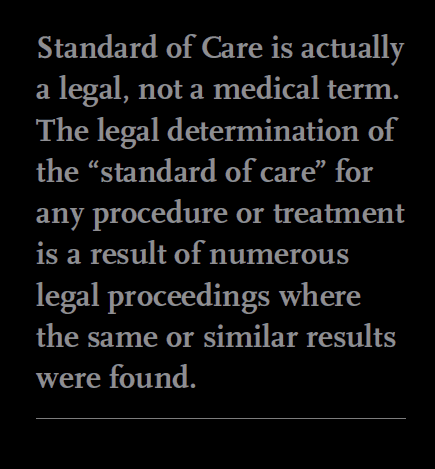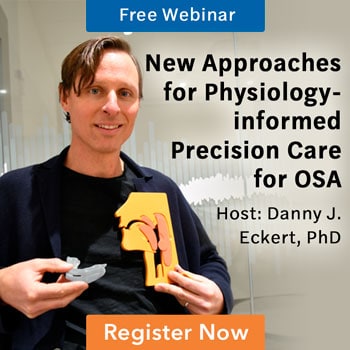by Ken Berley, DDS, JD, DASBA

Dental Sleep Medicine is truly a house divided. In my 34 years of practicing dentistry and 20 years of practicing law I have never been associated with a more splintered, and apparently confused, group. Unfortunately, each faction seems staunchly determined to stand their ground and battle to the death.
DSM is divided down the middle between the “haves and the have-nots.” Or, if you prefer, between, those dentists who receive adequate numbers of referrals from Sleep Physicians to survive and those who don’t. Personally, I am in a unique position. For those of you who have heard me lecture, you know that I have no agenda. In this argument, I find myself in the unique position of understanding and agreeing with both sides.
DSM is separated into two factions. The first group of dentists want desperately to practice Dental Sleep Medicine but they have no diagnosed patients. They are fearful that a referral to a Sleep Physician will result in the patient being forced into CPAP without OAT being offered. These dentists are being encouraged by corporate entities to employ HST and avoid Sleep Physician referral. The second faction in Dental Sleep Medicine are those dentists who became involved very early in the practice of DSM. These dentists worked hard to develop a referral pool of Sleep Physicians and enjoy their confidence now. Many of these practitioners have been able to limit their practices to Sleep Disordered Breathing and are able to fill their schedules with patients referred by Sleep Physicians. Therefore, DSM has two separate and distinct practice models and both groups adamantly defend their practice philosophy. However, legally we cannot have two standards of care.
 Contrary to the belief of some, I am not trying to disenfranchise Sleep Physicians or damage the AADSM. I am simply trying to help DSM avoid a legal feeding frenzy that will surely come if we remain divided.
Contrary to the belief of some, I am not trying to disenfranchise Sleep Physicians or damage the AADSM. I am simply trying to help DSM avoid a legal feeding frenzy that will surely come if we remain divided.
OSA is a very small part of my practice and likely will remain that way. I truly have no “skin” in this game. However, in my practice, I chose to refer ALL of my patients to a Sleep Physician for a face-to-face consultation. I do so because we have no established standard of care and I am risk-averse. As a result of my referrals, I now receive semi-regular referrals from 3 Board Certified Sleep Physicians in Northwest Arkansas. These referrals average around 10 patients per month, which obviously will not sustain a full time OSA practice. I appreciate and respect these physicians for entrusting me with the care of their patients. However, it took 2 years of referring patients from my practice (82 to be exact) before I received a single referral. With persistence and an abundance of referrals, I have won over 3 of the 4 Sleep Physicians in my area. While the referrals I personally receive are few in number, I understand the mentality of those who have been successful in garnering the trust of Sleep Physicians in their market. However, I empathize with those who are trying to play by the Position Papers of the AADSM/AASM and have NO patients to treat. I know the frustration and alienation of referring only to watch my patients with an AHI of 6-10 forced into CPAP.
To better understand the two sides of the argument I attended numerous courses in Dental Sleep Medicine. I have been present as MD’s have informed me that criminal charges could be filed against me if I owned a Home Sleep Testing unit. That to own HST equipment was out of my scope of practice. To quote, “I hope you look good in an orange jumpsuit.” Out of curiosity, I attended several commercially motivated continuing education courses. The common goal of these courses is to get dentists involved in the practice of DSM with the hope that the new dentists will purchase the presenter’s wares. Each of these commercial courses seem to recommend Home Sleep Testing ordered by the new dentist and diagnosed by a Sleep Physician working for the HST Company. However, many of these courses rarely or never mentioned the need for a referral to a Sleep Physician. Never is there a reference to the “Position Paper of the AADSM/AASM 2013.” Nor did I hear a comment that the dentist might be practicing outside the “Standard of Care.”
It cannot be intelligently argued that DSM has an established standard of care. When referring to the Standard of Care, most dentists think this is a dental/medical term that signifies what a practitioner “should do” in a particular circumstance. So what do you do if well-meaning professionals disagree on what you “should do?” For anyone who has spent a significant time in court, you know in any malpractice litigation, more than one standard of care is presented. Generally the plaintiff and defendant have experts swearing an oath and testifying to completely different standards of care. In DSM we have two different factions each presenting their approach to the practice of Dental Sleep Medicine as the standard of care.
Standard of Care is actually a legal, not a medical term. The legal determination of the “standard of care” for any procedure or treatment is a result of numerous legal proceedings where the same or similar results were found. For example, we are all aware that it is the standard of care to place a rubber dam before root canal therapy. This is a legal precedent resulting from many cases on the matter. Contrary to popular belief, DSM has NO established standard of care, because no body of case law is available on the subject. There has been no legal determination of what “should be” done in any area of Dental Sleep Medicine. Therefore, to those who repeatedly write articles regarding the standard of care in DSM, please be aware that the LAW, not dentists, determines the standard of care. As stated earlier, I am presented with more than one standard of care in every malpractice case. The legal definition of Standard of Care? “Whatever the 12 people in the Jury say it is.”
The problem:
It is my professional legal opinion that the “AADSM/AASM Practice Parameters 2006” will be introduced into evidence as a learned treatise exception to the hearsay rule in a malpractice action. It could easily be used by the jury to determine a standard of care for DSM. This document does not require a face-to-face visit with a Sleep Physician; it does not state who must write the prescription for OAT; it does not require that a dentist provide treatment (qualified dental personnel); however, it does require the patient return to the referring physician for monitoring.
It is my professional legal opinion that the “AADSM/AASM Policy Statement of 2013” will NOT be introduced into court as your standard of care. This document contains a number of legally inaccurate statements, therefore, it is my opinion that no trial judge would allow this document into court. However, you should realize that my opinion has not be adjudicated and therefore, I could be wrong. The 2013 Policy Statement: requires a face-to-face consultation with a Sleep Physician before a dentist can provide OAT; requires that a Sleep Physician write the prescription for OAT; requires that a qualified dentist provide treatment; and it requires that the patient be monitored by a Board Certified Sleep Physician.
Therefore we have two published “standards of care” by the same organization. What a legal mess. I believe that this disparity is responsible for the divergent approaches outlined by different practitioners. We need strong leadership in Dental Sleep Medicine to bring these two groups together. Our house is divided and will not last in this state of disarray.
From the Mail Bag
Ken
I have a few dentists an hour north of me asking about treating sleep apnea without an official diagnosis. They know a lot about sleep apnea (trained by moi) but they live in an anti-government “off the grid” type area. Many of their patients just want to pay cash for an HST and appliance and not have their insurance or Medicare find out. At least they know better than to treat without an HST but they also don’t want their patients going to the dentist down the street that will make them a “snore guard” sometimes ignorance is bliss right?
xxxx, DDS
Dear xxx, DDS:
This is my most frequently asked question. And the answer is “sure they can treat them” but they won’t be following the alleged standard of care. That is like extracting a tooth without an x-ray. You can do it!! The question is not can you, but should you. If I were in that situation and were tempted, I would do HST and have it diagnosed by the Sleep Physician working for the HST Company. Then I would send the patient to his PCP for a physical if he had not had one within the last year to ensure no co-morbid diseases that are undiagnosed. Then the dentist is not taking full responsibility for the medical condition of the patient. Have the PCP sign the Rx. Make sure the dentists document any changes in subjective and objective symptoms after placement by repeating the HST. Then recall each year. Have the patient sign my informed consent and release of liability and I think they would be defensible in court if something happened.
K
 For those who will not like this article, please don’t feel led to call and attack me. I received an adequate number of those over the last article explaining my Scope of Practice. Please call the leaders of the AADSM who created this monster. That is where the problem lies. I’m only the messenger. However, as Socrates said, “To avoid all criticism: Say Nothing, Do Nothing and Be Nothing.”
For those who will not like this article, please don’t feel led to call and attack me. I received an adequate number of those over the last article explaining my Scope of Practice. Please call the leaders of the AADSM who created this monster. That is where the problem lies. I’m only the messenger. However, as Socrates said, “To avoid all criticism: Say Nothing, Do Nothing and Be Nothing.”
Stay Relevant With Dental Sleep Practice
Join our email list for CE courses and webinars, articles and more..





